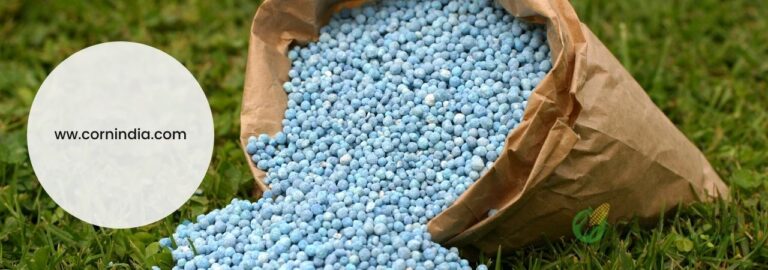
Grain and Straw yields in Maize Composites
Table of Contents
Abstract
Eight promising genotypes were studied for three seasons (1989-1991) at the Agricultural Research Station, Amberpet to evaluate their stability for grain and straw yields under kharif conditions. There was a significant variation for genotypes and genotype x environment interaction for grain as well as for straw yields. Both linear and non-linear components were significant and between the two the linear component was higher in magnitude. Harsha appeared to be the most promising dual-purpose variety, whereas Varun and Ashwini were found to be suitable for grain and straw yields respectively.
Maize (Zea Mays L) is next in importance to rice as a valuable food-cum-fodder crop in Andhra Pradesh. It is grown under different edaphic and environmental conditions and it is known to exhibit a high degree of genotype-environment interaction. There is a special need to recommend varieties suitable for both grain and fodder purposes during the kharif season with stability in performance over a wide range of environmental conditions. The present study, therefore, was undertaken to evaluate promising varieties of grain-cum-fodder maize in multi-environmental tests in order to identify a high-yielding and stable genotype before their final recommendation to the farmer
Materials and Methods
The experimental material consisting of 8 promising composites of maize (including a variety ‘ROHINI’ as a check) was sown in a randomized block design with three replications at Maize Research Station, Amberpet, Hyderabad during the kharif seasons of 1989 to 1991 (3 years) in black soil. The plot size was 5.0 x 3.0 m2 and each plot accommodated four rows spaced at 75 cm between rows and 20 cm between plants within a row, respectively.
The usual and recommended package of practices were attended so as to raise a healthy crop. Observations on total plant basis/plot were recorded for grain yield and also for straw yield. Stability parameters were worked out using the mean plot yield (Grain as well as straw yield )obtained over the year and the statistical model as suggested by Eberhart and Russel (1966)
Results and Discussion
The mean grain and straw yield of the eight genotypes (Table 1) in general was low during 1989. As evidenced by the native environmental index value for the year, the season could be considered as a poor environment. Pooled analysis of variance (Table 2 ) showed that mean squares for environment were highly significant against genotype-environment mean squares, whereas varieties were found to be significant for Grain and Straw yields in Maize Composites with lower magnitude varieties, environment (Linear), variety x environment (linear) and a non-linear component of genotype-environment interaction were highly significant.
It further revealed that the genotypes reacted considerably with the environmental conditions that existed in different years of testing. In similar studies Rao (1986) observed that a large portion of the genotype x environment interaction in maize was accounted by the linear component and the non-linear component was comparatively small but significant.
Mean grain, as well as straw yield and the two stability parameters viz. regression co-efficient (bi) and deviation from regression (S2di) for 8 genotypes, are given in Table 3. The linear regression analysis of facilities in identification genotypes with wider adaptability over a range of environments. A genotype with high mean, unit regression coefficient (bi=1.00) and least deviation from regression (S2di=0) is considered as an ideal widely adopted and stable genotype (Eberhart and Russel, 1966).
Further, it has, however, been emphasized by Jatasara and Paroda (1980) that linear regression could be considered as a measure of stability, with the genotype with the least deviation around the regression being the most stable and vice versa. According to these criteria, Harsha and Varun with high mean grain yields were the most stable and composite B101, though it gave on par yield to that of Varun, was the least stable genotype-where as for straw yield, Ashwini and Harsha appeared to be the most desirable check
“Rohini” and composite B 104 along with other varieties were unstable for both characters. Therefore, from the results it can be concluded that Varun and Ashwini could be considered desirable for grain and straw yields in maize composites, respectively, whereas Harsha appeared to be the most promising dual-purpose genotype.
Table: 1. Mean yield of genotypes in different seasons.
| Genotype | Grain yield (q/ha) | Straw yield (q/ha) | |||||||
| 1989 | 1990 | 1991 | Mean | 1989 | 1990 | 1991 | Mean | ||
| Harsha
Comp.B-101 Varun Comp.B-102 Ashwini Comp. B 103 Comp.B 104 Rohini (Check) Mean Environment index | 32.1
29.6 26.7 23.4 22.1 20.9 28.3 21.0 25.5 -4.3 | 34.4
39.4 34.0 33.3 34.6 33.3 24.1 22.1 31.9 2.1 | 34.3
29.4 37.2 29.8 31.8 32.8 33.3 28.3 32.1 2.2 | 33.6
32.8 32.6 28.6 29.5 29.0 28.6 23.9 29.8 | 29.5
23.8 27.8 23.8 27.4 26.4 28.5 26.5 26.7 -4.8 | 34.2
33.3 32.3 28.8 36.0 35.4 31.2 39.6 33.8 2.3 | 35.8
30.4 32.7 30.3 36.9 34.3 35.2 36.4 34.0 2.5 | 33.2
29.2 30.9 27.6 33.4 32.0 31.6 34.2 31.5 | |
Table: 2. Analysis of variance of grain and straw yield.
| Source of variation | d.f | Mean squares | |
| Grain yield (q/ha) | Straw yield(q/ha) | ||
| Genotypes(G)
Environment(E) G x E E + G x E E(Linear) G x E (Linear) Pooled Deviation (Non-liner) Pooled error | 7
2 14 16 1 7 8 42 | 29.59..
84.73.. 12.68.. 27.06. 224.50.. 11.27.. 15.19 1.67 | 14.84..
37.58.. 7.89.. 19.81. 277.72.. 3.63.. 2.86 0.32 |
.. Significant at 0.01 levels
Table: 3. Mean yields and parameters of stability of different maize genotypes
| Genotype | Grain yield (q/ha) | Straw yield (q/ha) | ||||
| Mean | bi | S2di | Mean | bi | S2di | |
| Harsha
Comp.B-101 Varun Composite B 102 Ashwini Composite b 103 Composite B 104 Rohini (check) Mean | 33.6
32.6 32.8 28.6 29.5 29.0 28.9 23.9 29.8 | 0.347
0.714 1.381 1.207 1.707 1.871 -.164 0.618 1.01 | -1.687
49.373 2.715 6.999 2.894 -1.478 40.427 16.953 | 33.1
29.2 30.9 27.6 33.4 32.0 34.2 36.6 31.5 | 0.763
1.106 0.649 0.797 1.253 1.165 0.657 1.583 0.998 | 0.935
4.576 -0.153 0.765 0.184 0.717 7.416 5.915 |
LITERATURE CITED
Eberhart, S.A. and W. A. Russel. 1966. Stability parameters for comparing varieties. Crop sci.6:36-40. Jatasare, D. S. and R. S. Paroda.1980. Phenotypic stability analysis for synchrony trait in wheat Triticum aestivum W.Indian J.Genet. 40:132-139. Rao, N.J.M. 1986.Genetic analysis of yield and other quantitative traits of economic importance in maize (Zea Mays L.). Ph.D. Thesis, Institute of Argil. Sci., Banaras Hindu University, Varanasi (India)






